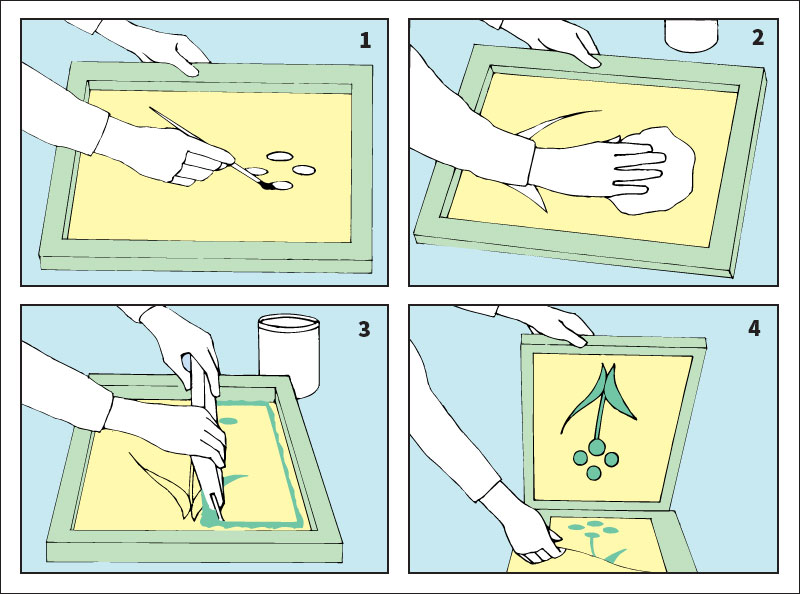Screen printing is a printmaking technique in which ink is forced through a piece of silk onto paper or other material. The screen process is used commercially to print such items as billboard illustrations, package labels, and fabric designs. It is sometimes called silk-screen printing. In art, screen printing is called serigraphy. This article describes serigraphy.

To make a screen print, the artist uses a piece of silk stretched tightly across a wood frame to form a screen. Such materials as nylon, polyester, or wire mesh may be substituted for silk. The artist places thick ink along one edge of the screen and then spreads the ink across its surface with a rubber blade called a squeegee. The squeegee distributes the ink or paint evenly and presses it through the weave of the silk onto the material below. In most cases, the material is paper, but artists also use fabric, linoleum, glass, and wood for their prints.
The artist uses stencils to mask out parts of the design that are not to be printed. Most stencils are made of cut paper and produce designs with crisp, clean edges. Designs can also be painted on the screen with glue or lacquer. When printed, such designs appear to be made of brushstrokes rather than cutout shapes.
Many colors can be printed on a single surface. However, the screen must be cleaned, prepared with a new stencil, inked, and printed separately for each additional color.
The Chinese used stencil printing as early as A.D. 1000 to make designs on fabric. The use of silk for the screen was begun in France in the 1800’s and was primarily used for commercial purposes. Artists began exploring the screen process in the 1930’s. During the 1960’s, it became a favorite printmaking technique with members of the Pop Art movement, including Robert Indiana, Robert Rauschenberg, and Andy Warhol (see Pop Art ).
